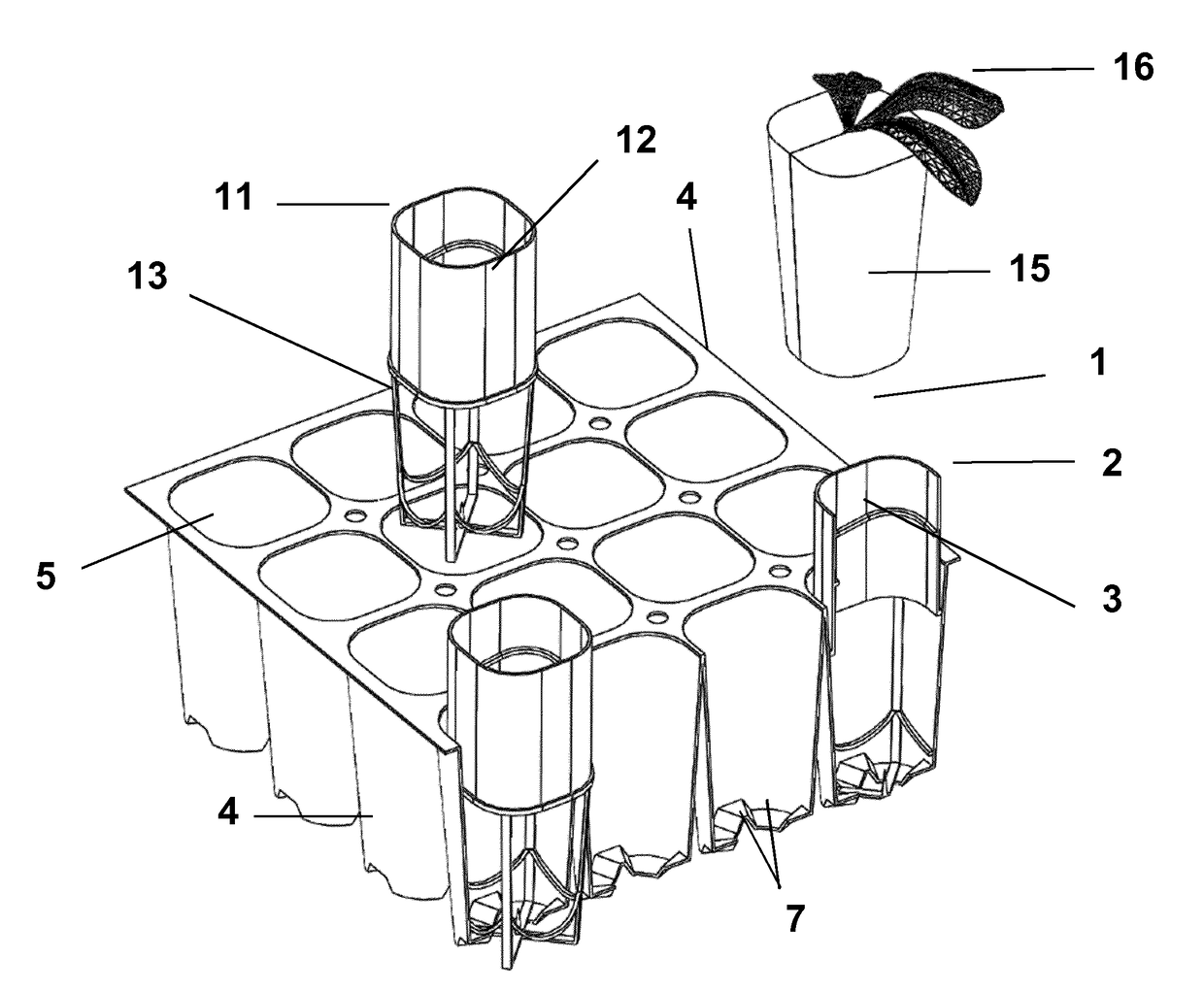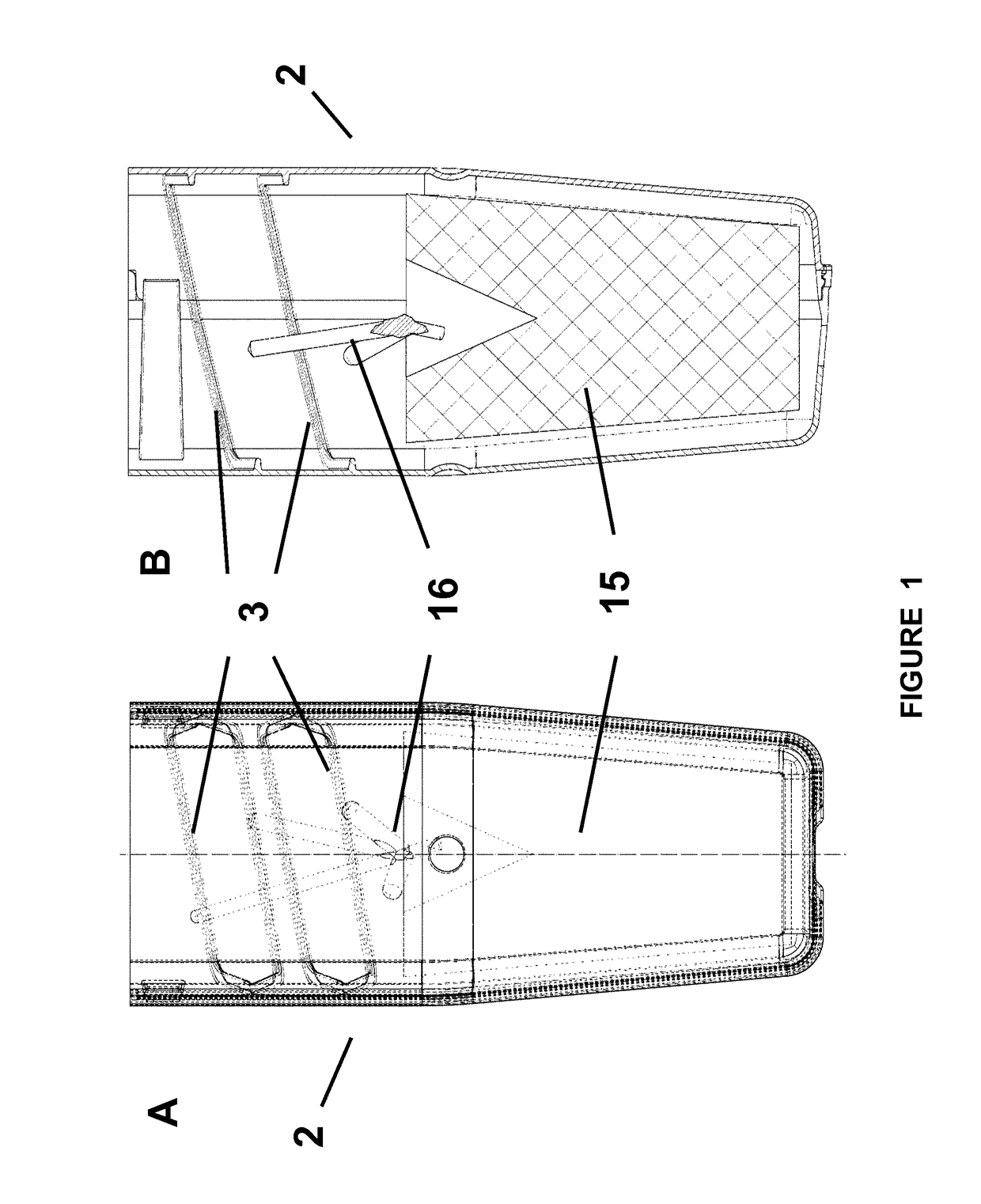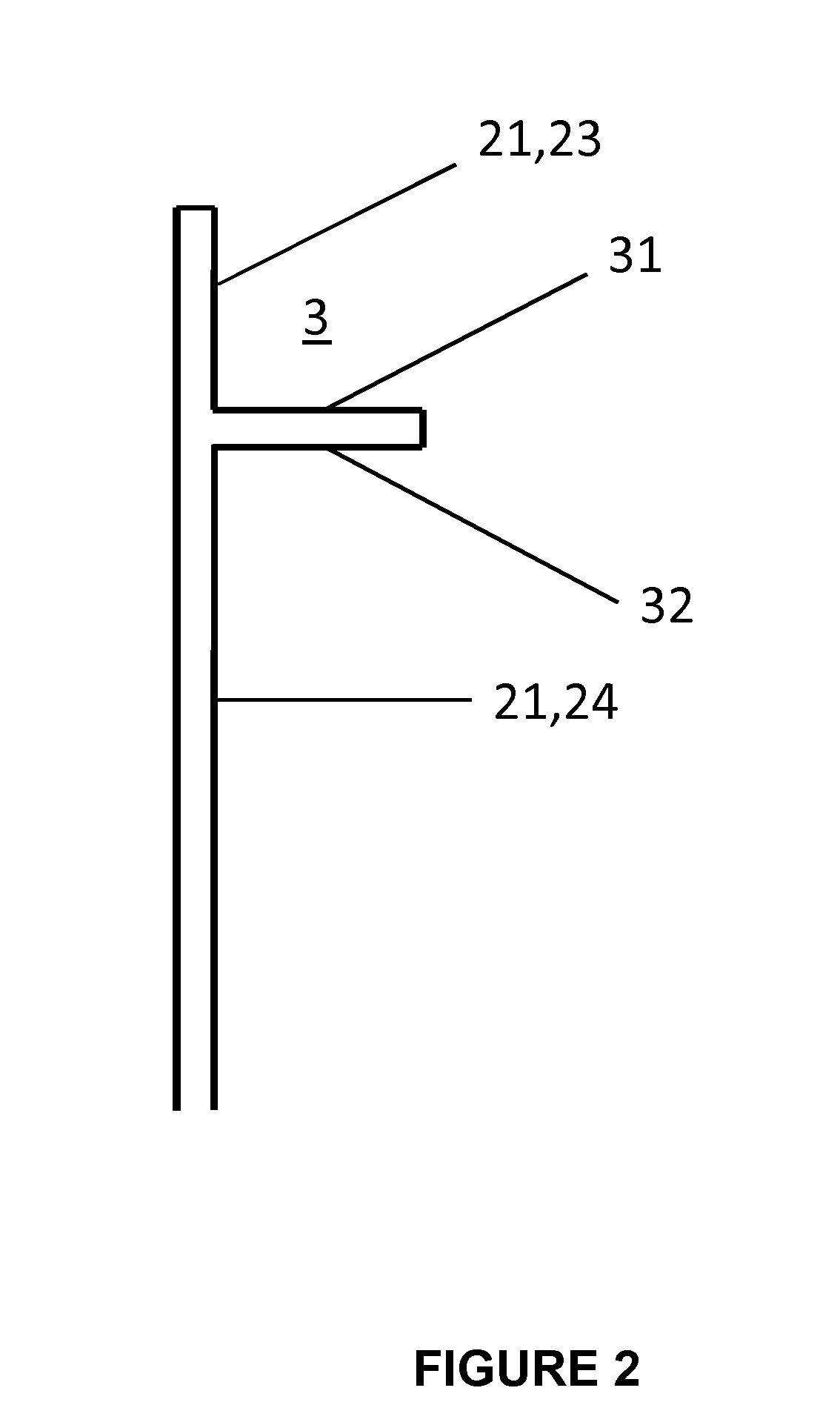Systems for cultivating plants with aerial roots
a technology of system and root, which is applied in the field of systems and methods for cultivating plants with aerial roots, can solve the problems of difficult to separate plants at a later stage, damage to young roots, and tend to grow relatively long and in all directions, and achieves the effects of avoiding entanglement of roots, simple, reliable, efficient, and convenient to us
- Summary
- Abstract
- Description
- Claims
- Application Information
AI Technical Summary
Benefits of technology
Problems solved by technology
Method used
Image
Examples
embodiment a
stem
[0078]In particular embodiments, the application provides systems for cultivating plants which comprise a tray with cups and vases for positioning therein, whereby the side of the vase extends fully over the entire height of the vase and the inner surface is essentially continuous. The vases comprise one or more ridges extending circumferentially along the inner surface of said vase, more particularly at least on the upper half of the inner wall of the vase. The variations envisaged for the ridges within the collars are those for the ridges described above.
[0079]In particular embodiments the vase is made of at least two parts which can be connected by interlocking features. This facilitates positioning and / or removal of the substrate in the vase. The nature of the structure of the trays used in combination with the vases in the full-vase system is less critical in that vases themselves provide the limited environment required to direct the roots extending from a substrate positi...
embodiment b
[0083]In particular embodiments, the application provides systems for cultivating plants which comprise a tray with cups and each vase corresponds to a collar positioned above each of said cups. The collars comprise one or more ridges extending circumferentially along the inner surface of said collar, such that, when the collar is positioned on the cup of the tray, said ridges are provided on the upper half part of the vase formed by the collar and the cup in the tray. The variations envisaged for the ridges within the collars are those for the ridges described above.
[0084]In particular embodiments, the collar may be an integral part of the tray, but preferably the collar is removable from the tray.
[0085]The collar extends vertically along the edge of the cup of the tray, extending the length of the vase at least 1 cm beyond the height of the tray. Thus, in these embodiments, the collar corresponds essentially to a hollow cylinder of which the cross-section corresponds to the ...
examples
1. Cultivation Systems with a Full-Vase System According to Particular Embodiments Envisaged Herein
[0128]FIG. 1 illustrates a vase (2) for use according to a preferred embodiments of the invention. The vase is about 4.7×4.7×10.7(height) in size. This vase is envisaged for use in combination with a substrate holder (15) which is about 6 cm in height when the plant root (16). The vase is characterized by the presence of two ridges (3) which extend obliquely along the inner surface of the top part of the vase.
[0129]FIG. 2 provides a detail of a cross-section of an exemplary ridge (3) extending from the inner surface (21) of the vase. The ridge is characterized by an upper surface (31) and a lower surface (32). The inner surface of the vase can be divided in a surface above the ridge (23) and a surface below the ridge (24).
[0130]FIG. 3 illustrates two parts of a vase (2) according to a particular embodiment envisaged herein. The inner surface (21) of the vase (2) comprises different typ...
PUM
 Login to View More
Login to View More Abstract
Description
Claims
Application Information
 Login to View More
Login to View More - R&D
- Intellectual Property
- Life Sciences
- Materials
- Tech Scout
- Unparalleled Data Quality
- Higher Quality Content
- 60% Fewer Hallucinations
Browse by: Latest US Patents, China's latest patents, Technical Efficacy Thesaurus, Application Domain, Technology Topic, Popular Technical Reports.
© 2025 PatSnap. All rights reserved.Legal|Privacy policy|Modern Slavery Act Transparency Statement|Sitemap|About US| Contact US: help@patsnap.com



